#bodyshell
Text
0 notes
Text

Well done, Android DMU. The Enrichment Center British Rail Management once again reminds you that Android DMU Hell is a real place where you will be sent at the first sign of defiance.
#this is a photo of a DMU being incinerated before the asbestos is hosed out and the bodyshell is cut up#at mayer newman near ipswich apparently#anyway the glados quote felt appropriate here
23 notes
·
View notes
Text
𝔄𝔪𝔬𝔯𝔟𝔦𝔱𝔞𝔩 - ℑ𝔫𝔰𝔦𝔡𝔢 𝔱𝔥𝔢 𝔅𝔬𝔡𝔶𝔰𝔥𝔢𝔩𝔩
#Amorbital#Invidia#Inside the Bodyshell#Full-length#Release date:#1998#Genre:#Death Metal#Themes:#Mythology#Slovakia
4 notes
·
View notes
Text

1956 Cadillac Eldorado Convertible
The Eldorado was at or near the top of the Cadillac line. The original 1953 Eldorado convertible and the Eldorado Brougham models of 1957–1960 had distinct bodyshells and were the most expensive models that Cadillac offered those years. The Eldorado was never less than second in price after the Cadillac Series 75 limousine until 1966. Starting in 1967 the Eldorado retained its premium position in the Cadillac price structure, but was built in high volumes on a unique two door personal luxury car platform.
The Eldorado carried the Fleetwood designation from 1965 through 1972, and was a modern revival of the pre-war Cadillac V-12 and Cadillac V16 roadsters and convertibles. It was the first Cadillac model to use a nameplate instead of previous Series model descriptions.
In 1954, Eldorado lost its unique sheet metal and shared its basic body shell with standard Cadillacs. Distinguished now mainly by trim pieces, this allowed GM to lower the price and see a substantial increase in sales. A total of 2,150 Eldorado's were sold at a much more modest US$5,738 base price (equivalent to $57,899 in 2021 dollars , nearly four times as many as in 1953.
For 1956, the Eldorado's body gained its own rear end styling with high, slender, pointed tailfins. These contrasted with the rather thick, bulbous fins which were common at the time. The Eldorado sport convertible featured extras such as wide chrome body belt moldings and twin round taillights halfway up the fenders. Sales nearly doubled to 3,950.0
#Cadillac Eldorado Convertible#Cadillac Eldorado#Cadillac#Convertible#el dorado#car#cars#classic cars
108 notes
·
View notes
Text










1932 Stout Scarab
Designed by William Bushnell Stout and manufactured by Stout Engineering Laboratories and later by Stout Motor Car Company of Detroit, Michigan.
The Stout Scarab is credited by some as the world's first production minivan
An experimental prototype of the Scarab became the world's first car with a fiberglass bodyshell and air suspension.
Unfortunately, only 9 were made and 5 have survived to this day.
261 notes
·
View notes
Text

Heidi Bucher
Bodyshells, Venice Beach, 1972.
200 notes
·
View notes
Text


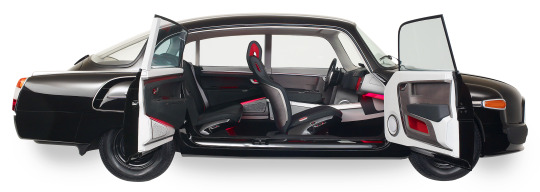



Faurecia Premium Attitude Concept (Tatra 2-603, 1972), 2008. Faurecia is an automotive supplier, outfitting vehicles with seats, doors, acoustic packages etc. In 2008 they chose to build a car of their own in order to showcase their products. The concept car demonstrated the next generation of interior innovations cloaked in the bodyshell of a Tatra saloon. The interior was stripped out and refitted with contemporary materials while the exterior was given a retro-futuristic makeover
#Tatra#Tatra 2-603#Faurecia#Faurecia Premium Attitude Concept#2008#custom car#concept#prototype#design study#suicide doors#retro futuristic#showcase
207 notes
·
View notes
Photo
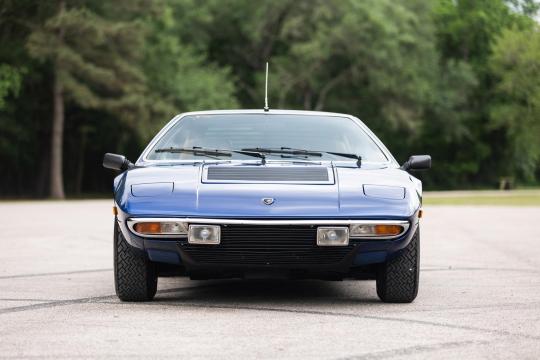



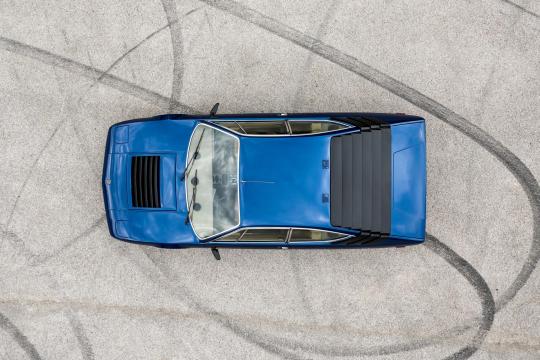
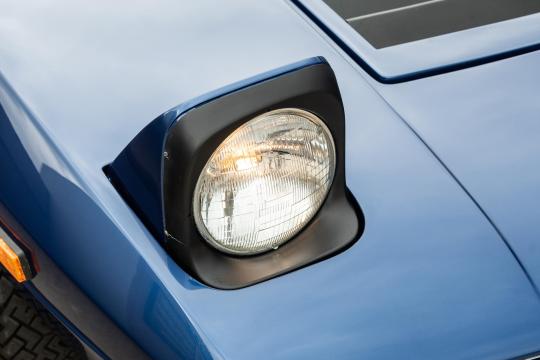
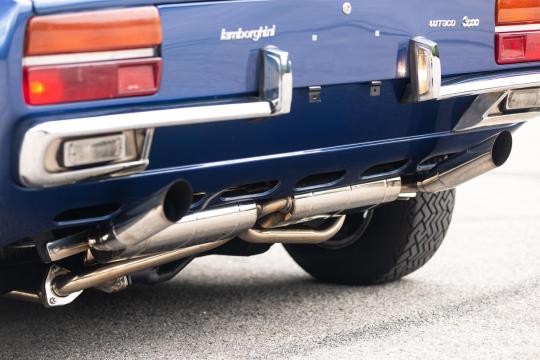
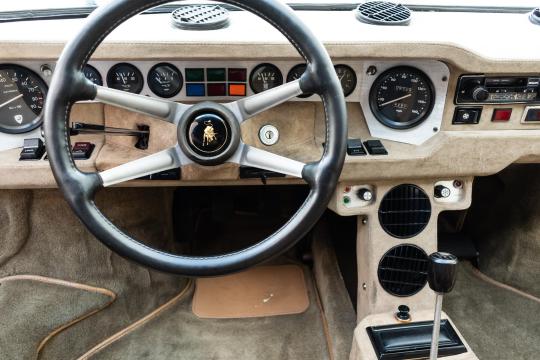
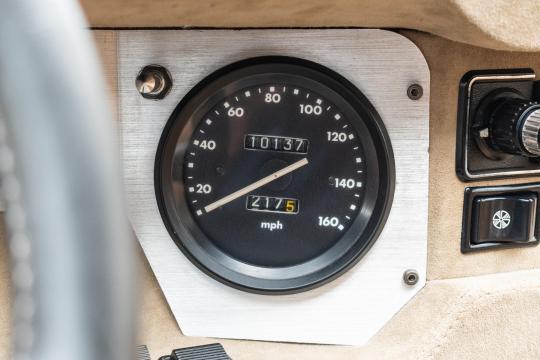
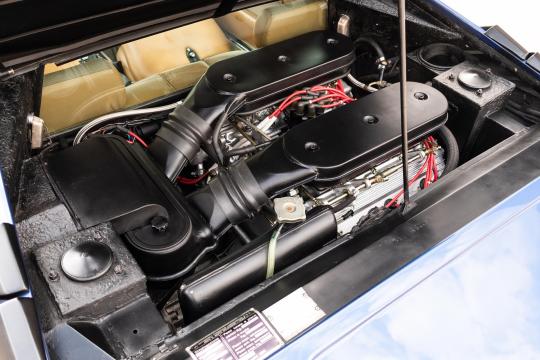
Lamborghini Urraco P300
Despite having been conceptualised as the model to dramatically increase sales and bring Lamborghini greater financial stability, the Urraco P250 proved a commercial flop. Production started in late 1972 following major equipment and floorspace investment. However, by late 1974, less than 500 had been delivered. The Urraco should have gone into production two years earlier than it eventually did. Lamborghini had originally conceived the model with a view to selling over 1000 examples every year.
The disappointing reality left Lamborghini deep in the red, but the Urraco was only partly responsible for a difficult few years.
Compounding the firm’s troubles had been delays for the Countach, a worldwide recession, problems at Lamborghini Trattori and unionised labour, all of which contrived to take their toll on the company founder. In 1972, Ferruccio Lamborghini had sold his tractor company along with 51% of his motor car business. He cashed out of the final 49% in 1974 when the world was in the midst of an energy crisis that slashed demand for gas guzzling machinery.
Throughout this tumultuous period, development work continued on the Urraco. It mainly focused on the Paolo Stanzani-designed V8 engine that had been created especially for the new model at considerable expense. In November 1974, an uprated Urraco P300 was launched at the Turin Motor Show. It immediately went into production alongside the Countach LP400, Espada Series 3 and Jarama S.
Most significantly, the Urraco P300 came with an enlarged three-litre engine. Equally importantly, the power unit now incorporated dual instead of single overhead camshafts.
To take capacity up to three-litres, Paolo Stanzani’s all-alloy 90° V8 was stroked from 53mm to 64.5mm. Bore went unchanged at 86mm for an overall displacement of 2997cc (an increase of 534cc). Compression was dropped from 10.5:1 to 10.0:1. Four new Weber 40 DCNF twin-choke downdraught carburettors were installed to replace the old 40 IDF 1s used previously.
The consequence of these improvements was a dramatic jump in output. Peak power was up 40bhp to 260bhp at an otherwise unchanged 7500rpm. The torque rating also rose considerably; 195lb-ft was now on tap at 3500rpm compared to 166lb-ft at 5750rpm for the P250.
As before, ignition was via two Marelli coils and a single Marelli distributor.
Lamborghini’s five-speed manual gearbox was beefed up to cope with the increased power and torque. Transmission was via a single dry-plate clutch and Lamborghini differential. New damper settings improved the ride, but otherwise little was changed to the existing platform The P300 was based on the same steel monocoque body shell as its predecessor. The engine was housed transversely like the Miura.
Suspension was independent all-round with MacPherson struts, coil springs and telescopic shocks. Anti-roll bars were fitted at either end The twin circuit brake system incorporated unchanged 278mm ventilated Girling discs. Campagnolo’s handsome five-bolt cast magnesium wheels were retained. They measured 7.5 x 14-inches and originally came shod with Michelin XWX tyres.
An 80-litre fuel tank was fitted in the engine bay.
Visually, the only change made to the P300 Urraco was a switch from a two-bank to six-bank radiator cooling vent on the front lid. The rest of Marcello Gandini’s soft wedge creation was unaltered.In a decade not exactly renowned for design longevity, the Urraco proved somewhat timeless. Compared to Bertone’s other mid-engined 2+2, the Ferrari Dino 308 GT4, the baby Lamborghini aged very well, even though it was ultimately outsold by the Maranello product by five to one.Build quality was considerably improved over earlier examples and nowhere was this more apparent than in the cockpit.Bertone had originally been responsible for furnishing the bodyshells, but by the time the P300 was on stream, this work had been taken in-house.
Lamborghini used better quality materials and ensured a higher standard of fit and finish.To this end, P300s were generally equipped with full leather interiors instead of the often garish two-tone leather and fabric combinations seen earlier.
The full width dash layout was still just as haphazard though. The rev counter and speedometer were located at either end of the instrument binnacle and angled in towards the driver. Supplementary gauges and various rocker switches were housed in between.
Lamborghini’s unusual deep dish steering wheel with its four arced horizontal spokes and leather rim was also retained. Like the P250 (which remained in production for a few months longer to use up an overstock of parts), the only update was the gradual shift to anodised black bumpers, wipers and window frames. A more conventional three-spoke steering wheel was also introduced towards the end of production.
#Lamborghini Urraco P300#Ferruccio Lamborghini#Countach LP400#Espada#Jarama S#Miura#Ferrari Dino 308 GT4#Bertone
176 notes
·
View notes
Text
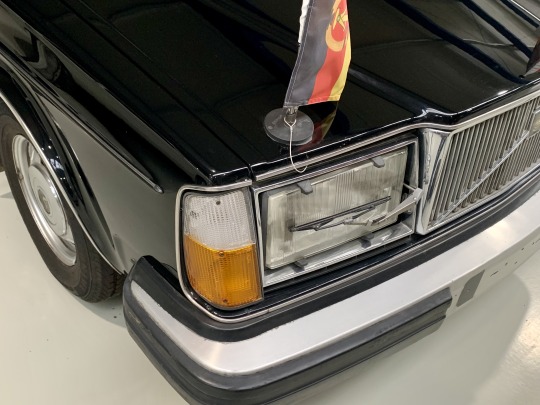

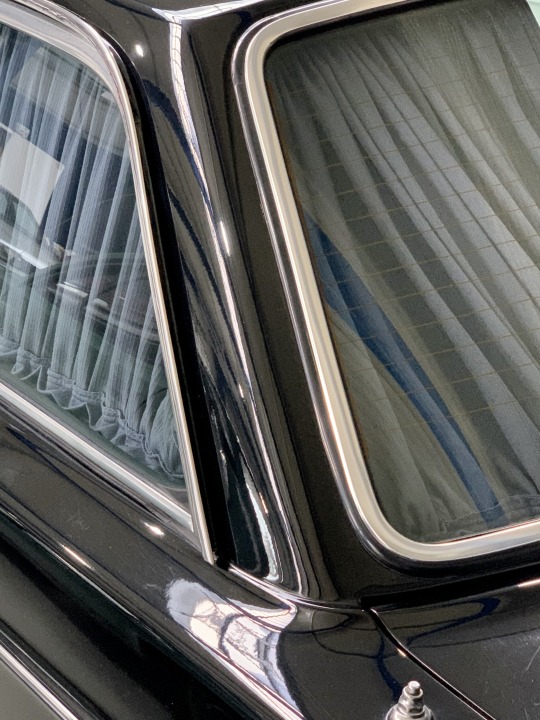
Probably not the Bertone you would expect: Volvo 264 TE (Top Executive). It is based on the 242, but modified by the coachbuilder located in Turin. This spectacular sedan is one of the 30 state limousines of this type used in the GDR.
In the early 1970s, the Council of Ministers of the GDR could not show to the outside world that the previous government vehicles of Soviet production such as ZIL-111 or GAZ-Tschaika no longer met their requirements. Western vehicles like Mercedes from their Klassenfeind were out of question. So they peeked into neutral sweden
But the Volvo 242 just wasn't state-carrying enough. The solution was for Volvo to transport two-door bodyshells with all the necessary parts and assemblies to Bertone. In Turin, the bodies were cut apart and lengthened with prefabricated sheet-metal parts, galvanized, assembled and provided with the desired equipment. The vehicles were then delivered to East Berlin where they received the latest radio and air-conditioning technology and the finishing touches.
Only 250 vehicles of the Volvo 264 TE were built.
#volvo#Volvo 264#Volvo 242#bertone#gdr#automotive history#streetfightingcars#autolandish#alfaromeole#photographers on tumblr
55 notes
·
View notes
Text
Having Diesel 10 Thoughts
Certain recent incidents have made me reconsider and think actually given how Diesel 10 basically has basically an excavator arm I can see why everyone's intimidated by him.
Also I looked up his class and, holy shit I didn't realize that he was a fucking diesel-hydraulic. And also:
Added to this were practical problems modernising the D800s: because of the scaled-down bodyshell there was very little room inside for extra equipment. It was, for example, physically impossible to accommodate a compressor as well as an exhauster, so the locomotives were unable to haul newer designs of air-braked coaching stock. It also proved impractical to equip them with electric train heating (ETH) equipment for similar reasons, so they retained unreliable steam heat boilers to the end of their lives.
They couldn't even fit an air compressor in this class. What the hell did they do to fit this gigantic fucking hydraulic arm into him?
Each locomotive was powered by two Maybach 1035 hp (D800–802) or 1135 hp (D803–829, D831–832 and D866–870) MD650 engines coupled to Mekydro hydraulic transmissions.
Oh, god. Okay now I want to see a "realistic" Diesel 10 design where (a) the arm retracts to fit within the loading gauge, and (b) his front engine and other equipment like the steam heat boiler has visibly been completely removed to make room for "Pinchy."
Also these were passenger engines? So it seems unlikely that the claw would've been installed for maintenance of way work or whatever like I originally suspected, which probably means that Diesel 10 was employed by British Rail to hunt down and catch runaways like Oliver, and might have been given that claw for the express purpose of quickly tearing down improvised barricades like the one Oliver's crew used to hide him in a quarry siding in 'Escape', and of course for directly attacking and damaging them before dragging them to the scrapyard.
So, uhh, this raises the possibility that someone at BR just yoinked an arrogant young passenger engine off the express service he was running and gutted him, totally destroying his ability to do what he was originally designed for to turn him into a weapon.
(Also, like, some of the diesels in the series seem to just have names and not numbers or have nicknames they've "earned" by being nuisances, e.g. Spamcan and D.0261, Bear before joining the NWR, but every single one of the Class 42s was named. Did they, like, take his original name away as, like, a ritual severing of his ties to his identity? Obviously his number's different unless he was D.00810 / Cockade)
And then, just a few years after steam was finally abolished on BR lines, they declared his class, and his entire type of transmission, non-standard and they met the same fate as the steam engines he helped catch. Holy shit like I saw stuff about the early-generation BR diesels not having very long service lives but I did not fully process that the 28s, 42s, and Hymeks were withdrawn after only like 10 years, jesus christ.
Uhh, I guess that'd explain why he ended up on Sodor then? Did they immediately start getting rid of engines like Diesel 10 once they outlived their usefulness, or did they start sending him after other diesels and he got wise to the fact that his days were numbered?
Okay I have a horrible dark AU idea for how this went down since Magic Railroad's basically a Shining Time Station movie and doesn't quite fit the rest of T&F canon. Diesel 10 got sent to Sodor once to retrieve a "stolen" steam engine - possibly Oliver - and managed to terrorize and intimidate the NWR's residents while searching for the fugitive for a while because the law was very nominally on his side, until he fucked up and did something that let TFC kick him off the island even though he was there on official British Rail business (as opposed to the other diesels who kept getting booted off because they were on lease to help the NWR and were there at TFC's pleasure). Possibly something like attacking and damaging an NWR engine acquired through completely legal means, or even threatening / hurting / almost killing one of the human employees.
And then a few years later, he came back and one of the following happened:
Idea 1: Diesel 10 went rogue and came to Sodor with a massive grudge against steam engines because now it wasn't just his job, it was personal because so many preservationists had fought so hard against him to save their 'precious steamies,' and in his warped mind he believed that nobody was even trying to save diesels. When he got word that his class were being withdrawn he went straight to the biggest 'heritage' railway in the country determined to take as many steam engines down with him as he could. And possibly got blocked in a siding / shoved into some trap points / derailers and left to think about his actions.
Idea 2: Diesel 10 had more or less the same mindset, but he didn't go rogue, he was sent to Sodor to collect Boco or Bear! Because whoever was giving him orders at BR had the same idea and thought that TFC had only accepted any diesels reluctantly and no one on the NWR was going to actually fight for some obsolete nonstandard diesels. And they were horribly wrong.
Idea 3: Some dumb motherfucker on British Rail didn't check their paperwork and tried to send Diesel 10 after a fellow Warship without knowing what class he was, and he lost his nerve after his would-be victim recognized him, and finally got that there were no "winners" in a world where engines were nothing more than expendable tools. Long story short he ends up a fugitive himself, and possibly dragging one of the other Warships to Sodor with him. Or failing to do so.
76 notes
·
View notes
Text

Are you looking for Strechable Gym/Yoga Bra ?
Get BODYSHELL Breathable, Stretchable Soft Gym Wear Set/Bra & Pants Set for Girls and Women’s For Yoga, Running and Exercise offer price.
https://www.bodyshell.in/product/stretchable-fitted-nylon-blend-green-color-solid-women-track-suit/
0 notes
Text
Review: Fujimi Super Tune Up F Series


Introduction:
Fujimi Mokei Co., Ltd. is a Japanese model manufacturer based in Shizuoka Prefecture. It produces plastic model kits of a variety of vehicles, including model aircraft, model cars, model ships and model armored vehicles along with historical structures and science fiction kits. Since "mokei" means "model" in Japanese, "Fujimi Mokei" is often called "Fujimi Model(s)" in English. Due to the popularity of Formula One cars, they also produced their own 1/32 scale F-1 cars. Judging from their respective boxarts, the cars were seemingly based on the 1989 Formula One season. Which probably also released that year, a year earlier before Tamiya or ARII released their own F-1 cars. It seems like there're 2 versions of this series, since 2 of them I got has variant colored boxarts. The white boxarts version, they're included with large rear velgs, small front velgs and plastic tires. While the dark colored boxarts was included with gold plated wheelsets and sponge tires.





No. 01: Mclaren Honda:
Once again due to the popularity of Mclaren, many toy companies including Fujimi took the chance to make their own product for money making. The car was based on Mclaren MP4/5 judging on the artwork and the year they released this line. However, this conversion wasn't inspired from the Legendary Ayrton Senna version but, rather Alain Prost.
Design thoughts: Unlike Tamiya and ARII, this representation of Mclaren appeared to have blocky shape on it's side fairings and the nose is very thick. I like Fujimi's representation of Mclaren car as well.
No. 02: Benetton Ford:
The car was based on B189 and most likely based on either Nelson Piquet or Emanuele Pirro version and unlike Tamiya & ARII, B189 has bright green colored bodyshell. Although, the actual car has 5 color schemes.
Design thoughts: Also digging on this. Perhaps, out from all release, this is the most colorful livery coming from Benetton Ford since both Tamiya and ARII made B190B and B192 versions which only got less colorings on their livery.
No. 03: Leyton House March:
Well, pretty unique Fujimi actually released something different than both Tamiya or ARII. The car was based on March 881 driven by Mauricio Gugelmin and has turquoise colored bodyshell.
Design thoughts: I gotta admit, despite being underrated, this is one of the cool yet unique. Unfortunately, the side part of the rear nose was made to be quite narrow, thus hinders fitting into it's chassis since the battery locker will blocking the bodyshell's side rear nose. You'll have to remove the battery locker of you want to fit the bodyshell into the chassis
No. 04: Ferrari:
Well, other than McLaren, Ferrari is the 2nd that caught attention to even Fujimi to make their own. It was based on Ferrari 640 and like every Ferrari cars it has red colored bodyshell and it was inspired from Gerhard Berger's car instead of Prost, since Prost is still on McLaren team back in 1989.
Design thoughts: I like how this car appeared to be the slimmest of all but, it's nose is quite bold. This is pretty different representation since both Tamiya and ARII made the Ferrari cars looking very broad.
No. 05: Black Special
Unlike the others, Black Special is a fictional car made by Fujimi and after a close inspection from me, the black special is literally McLaren Honda bodyshell in black color. It seems like it was meant to be a special release from Fujimi.
Design thoughts: Well, despite being a recolor but, this car is looking pretty wicked and badass, I love how Fujimi also went wild on producing their own original design instead of referencing another F1 cars.
No. 06: Lamborghini:
To be frank... I couldn't find an actual car that has livery like this but, since it was called Lamborghini, it can be assumed the car was inspired from Lola LC89. However, the bodyshell wasn't even based on Lola but, it was a reused of Leyton House March bodyshell in navy blue color. I guess this is just another one of Fujimi's special release. Unlike the others, the car's livery doesn't even have any numbering.
Design thoughts: I personally like this one most, it's simple and I really like the color, eventhough it was loosely inspired from a certain F1 car. Like Leyton House March, it's bodyshell won't fit if the battery locker is attached on it's chassis.

Super Tune Up F Series Chassis:
The chassis was build similar like the old class tamiya mini 4WD chassis however, despite the looks it doesn't have any 4WD features. Even the kit only got 2 gears to attach, and each kit was included with 2 types of gear, red for standard run and black for speed run. The gear box appeared to have exposed view on the motor and gears. The terminals are silver color, I gotta say the chassis mechanism was designed to be way too simple. Each kit were included with 2 types of keylock; the standard one and the one with rear bumper. I know the photo contents are inconsistents, since one of them were already half assembled and the Ferrari one was already fully assembled while the rests were still in unassembled condition but, to tell you the truth it took me 3 years to complete this Fujimi kits. They're way harder to find than Tamiya or ARII, which I don't really care anymore getting them unassembled or fully assembled or even what versions that I got.


Thoughts:
I love the colorful bodyshell of these compared to ARII which mostly only got 4 colors although, it surprised me a little that some of the bodyshells are simply a reused from certain previous kits. But, the variable colorings helps to hide their similarities vaguely. And... I never expected that they're not designed for mini 4WD despite they looked like one. Gotta admit the driver cars they picked are nothing famous except Alain Prost. It's no wonder the line became so underrated and not many people know this but... Atleast, I'm happy enough to be able to complete them all. The main problem from this kits, several kit with white boxarts suffered breakable plastic tires, I guess it's pretty understandable since they've been aged so long thus making them brittle eventhough I bought them brand new unassembled. And the Leyton House March/Lamborghini bodyshell would be reused by Academy Model Kit (Korean plastic model company) to make their own Mini 4WD car called Hot Wings with slight alterations, mainly for fitting their own Super-1 chassis.

Paintapp and decals by Archyd
#toys#review#toy review#Fujimi#ferrari#benetton#mclaren#black special#lamborghini#leyton#leyton house march#mini 4wd#model kit
3 notes
·
View notes
Text


With AC electrics receiving a fair bit of attention from model railway manufacturers in recent years, I wonder if the class 310 and 312 EMUs will be made as ready-to-run models one day. They're good choices, as they shared the same bodyshell design, both had long service lives and both wore a fair few liveries during their time.
2 notes
·
View notes
Text

1977 Pontiac Grand Prix
A complete reworking of the front header and bumper highlighted the 1977 Grand Prix, which was the final year for the 1973-vintage bodyshell that was set to be replaced by a downsized GP for 1978. The parking lamps were now positioned between the quad headlamps (same setup as a 1967 or 1968 Oldsmobile Cutlass), and the previous year's 'waterfall' grille was replaced by a narrower one that extended into the lower portion of the bumper. Behind the bumper were new reinforcements (mounting panels) made from aluminum rather than steel to reduce weight. In back the taillights were simplified to eliminate the weighty pot metal bezels that created the horizontal stripe effect in 1976. The same three models (J, LJ, and SJ) were carried over with engine revisions. The base Model J got Pontiac's new 135 hp (101 kW) 301 cu in (4.9 L) V8 as standard equipment, which was much too small and underpowered to propel a 4,000-pound car. Optional engines included a 160 hp (119 kW) 350 cu in (5.7 L) V8 or 180 hp (130 kW) 400 cu in (6.6 L); those two engines standard on the LJ and SJ models, respectively. The original thinking on the 301 CID engine was that the weight savings from using a significantly lighter engine would cancel out the horsepower loss from the smaller displacement. This turned out to be a major miscalculation and 301 equipped cars became much less desirable among Grand Prix enthusiasts and collectors in later years. The 301 also had a knocking (pre-ignition) problem that was later determined to be caused by the shape of the combustion chamber.
Each of those engines were Pontiac-built units as in previous years, but offered in 49 of the 50 states. Because Pontiac's own V8 engines could not meet the more stringent California emission standards set for 1977, all Grand Prixs (and other Pontiac models) sold in California were powered by Oldsmobile-built engines including Lansing's 350 cu in (5.7 L) "Rocket V8" for J and LJ, and the 403 cu in (6.6 L) Rocket V8 standard on the SJ and optional on the other two GPs in California. Due to a shortage of Olds 350 engines resulting from record sales of Cutlasses and reduced production of that engine due to a plant conversion to build a Diesel V8 beginning in 1978, a few 1977 Grand Prixs destined for California reportedly came off the line with a Chevrolet-built 350 cu in (5.7 L) V8.
Grand Prix sales increased to an all-time high of over 270,000 units for 1977, the last year for this bodystyle, despite competition from a newly downsized and lower-priced Ford Thunderbird introduced this year and a restyled Mercury Cougar XR-7 whose bodyshell switched to the T-Bird this year from the discontinued Ford Torino/Mercury Montego.
101 notes
·
View notes
Video
KEROSENE CASTLE por midcheshireman
Por Flickr:
the bodyshell and chassis of experimental gas turbine locomotive number 18000 preserved at didcot, built by brown boveri in 1949 , it was not very successful as a possible future form of motive power to replace mainly castle class locomotives on the western region and rejoiced in the nickname of "kerosene castle "
13 notes
·
View notes
Text
Hi all! I'm here to show off another model!
This one was a little passion project that didn't really start until I realised I needed to complete a group of locomotives.
The London & North Eastern Railway's class A4s were the East Coasts most premier express locomotives. There are many models of this locomotive available across many gauges. In N gauge there is the old Minitrix model and the newer Dapol ones. In O gauge there are kits or the new ready to run Hattons model, in partnership with Heljan. And in OO gauge there is the older Bachmann model, the constant re-releasing Hornby Super Detail models and the Hornby Railroad model.
For what it is, the Hornby Railroad model is very good in quality. While the plastic moulding and the finish of the model makes it look very matt and bland, with the cheaper printed details not helping its case, the model is very well detailed, even with its moulded handrails and lack of features like lamp irons. Surprisingly, the model has brass fittings. Both the chime whistle in front the chimney and the safety valves embedded in the cab roof are turned brass, and stand out against the matt finish.
The reasoning behind wanted an A4 is because, within being on an Eastern Region kick, I have a Peppercorn A1 and A2, an A3 and to complete the group I wanted an A4. Luckily a mate of mine was selling a job lot to Rails of Sheffield with a Railroad Mallard and spare A4 body included. I offered a better price for it all, and that same day I got the models. My mate had previously modified the locomotive to have the Super Detail A4 valve gear, which did make the model look better. However, the A4 wasn't going to stay in "as purchased" condition for much longer.
Not long after I got home, after buying the models, I grabbed the spare body and attempted my plan of action. I cut the valances off of the spare body, using the inside of the bodyshell as a guide of where to cut, I scored a couple times down the valances before bending them out, making it easier to remove as the plastic on the Railroad models is softer than most models.
Because the cutting of the spare body worked out so well, I decided that I'd swap the bodies over and use the spare one on the final model. However one issue I faced with the spare body was the lack of chimney. Now that the original body was now spare, I removed the chimney off that body to put onto the spare one.
Other things that were changed to the body was the removal of the moulded handrails, addition of new ones using short handrail knobs and 0.45mm brass wire, and fixing any small mistakes on the valances with a file.
While I was detailing up the body the thought of "which A4 do I model" was crossing my mind. A lot of my Eastern Fleet worked all over the LNER. My A2, No.60538 'Velocity' has many pictures and videos of it working around York and Newcastle. The A3 I own is of No.60103 'Flying Scotsman' which worked all over the network in its lifetime. A lot of the smaller Eastern engines I own worked around Scotland or the South East. So when picking an A4 to model, it would be a preference to a name and which one was in similar condition to Mallard. In the end this was thrown out of the window.
Time for a little bit of Fake History!
The London and North Eastern Railway A4 locomotives are one of the most famous British Pacifics built. Its distinctive Streamlined casing of the 1930s giving a look of style and speed.
The original four A4s were nicknamed the silver batch because the names contained the word silver. Later batches would be named after birds but would later be renamed after famous and distinctive people. Originally the A4s were only going to have 35 members, however upon request from Kings Cross, a 36th member of the class was built on the 5th August 1938 and went around nameless until a name was decided.
4904 (the J39 doesn't exist) was sent to King's Cross as the last member of the A4s, fitted with a double chimney, as standard of the later batches, painted in LNER Garter Blue. The men at Kings Cross were allowed to choose the name, and after a number of months at Top Shed, it was requested for its name to be Thunder, a striking name for the last member of the class.
However the nameplates would never be fitted. In 1939, a year after the locomotive's construction, the Second World War broke out, and like other members of the class, 4904 was painted in a plain matt black, but didn't receive the NE lettering showing its home routes and allocations. Because of this, the locomotive was nicknamed "the Black Shadow" or "Eastern Ghost". 4904 roamed the network and managed to go to places such as Crewe, Birmingham and even Exeter during the war, making the engine become some sort of urban legend. The legend was enhanced when LNER 4469 'Sir Ralph Wedgewood', previously known as 'Gadwall', was blown up at York Sheds on the 28th April 1942. What started out as a nickname, 'Eastern Ghost' became a myth. Many workers mistook 4904 as 4469's ghost, while it went about its work at night.
When the war ended on the 2nd September 1945, 4904 was in a sorry condition. Two months previous the locomotive's axle boxes ran hot and were in desperate need of replacement, alongside this, the conjugated valve gear, which was built to be regularly maintained, was becoming worn due to a lack of maintenance. 4904 was the first A4 to be overhauled post war because of these factors. The axle boxes were striped and scrapped, new ones were casted and refitted. Parts of the valve gear that were salvageable from 4469 were used, but most of the rods were recast from new.
Finally on the 24th December 1945, 4904 emerged from Doncaster works. It was renumbered to No.35 and Finally received its nameplates, painted in a striking red. There were debates for the engine to take 4469's name of 'Sir Ralph Wedgewood' but another A4 was given the name (No.4466, later No.6, and later again to No.60006).
The locomotive throughout the rest of its life was Numbered 60035 and bounced about the East Coast performing duties on many of the named trains around the areas he was based at.
Having a majority of the locomitive's fake history written up, and out of boredom at the time, Thunder was painted I'm Wartime Black with the numbers painted on by hand with a toothpick in white. After this I realised I kinda copied the Sir Nigel Gresley 60007 trusts idea due to SNG currently wearing Wartime Black.
Thunder stayed in this condition for some time, I didn't have the nameplates or paint, so he sat in Black until they were ordered and arrived. Not long after arrival of the paints and plates, the locomotive was painted, lined, numbered and crested and was finally bestowed its name. Very fitting as it loosely followed his fake history.
Thunder, like Ryan, is a jewel in my fleet, sleek, shiny and unique. This project took me just over a month to do, and proves that, with minor modifications, that the Railroad Models can be bought cheap and made to look as good as the Super Detail Models available for double to price.
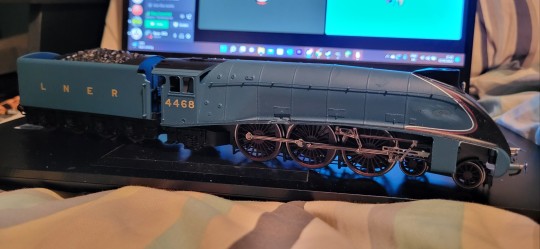
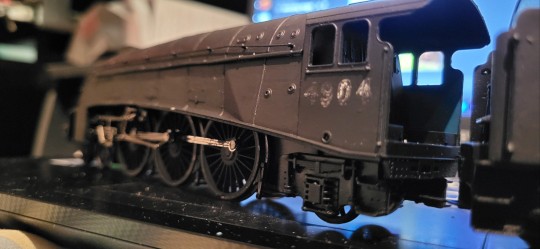
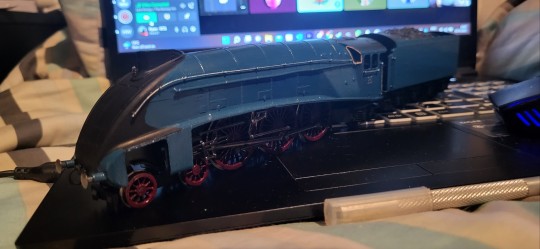

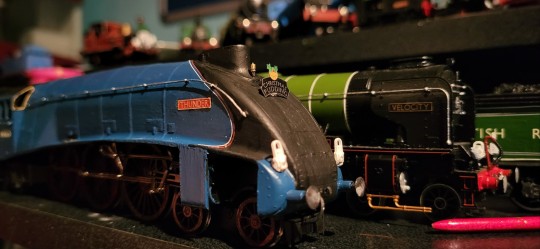
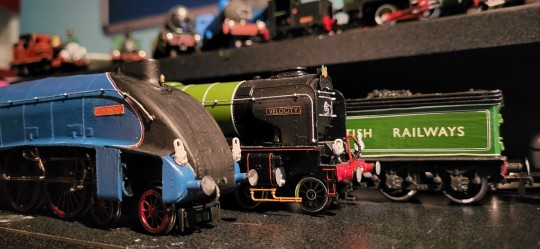
13 notes
·
View notes